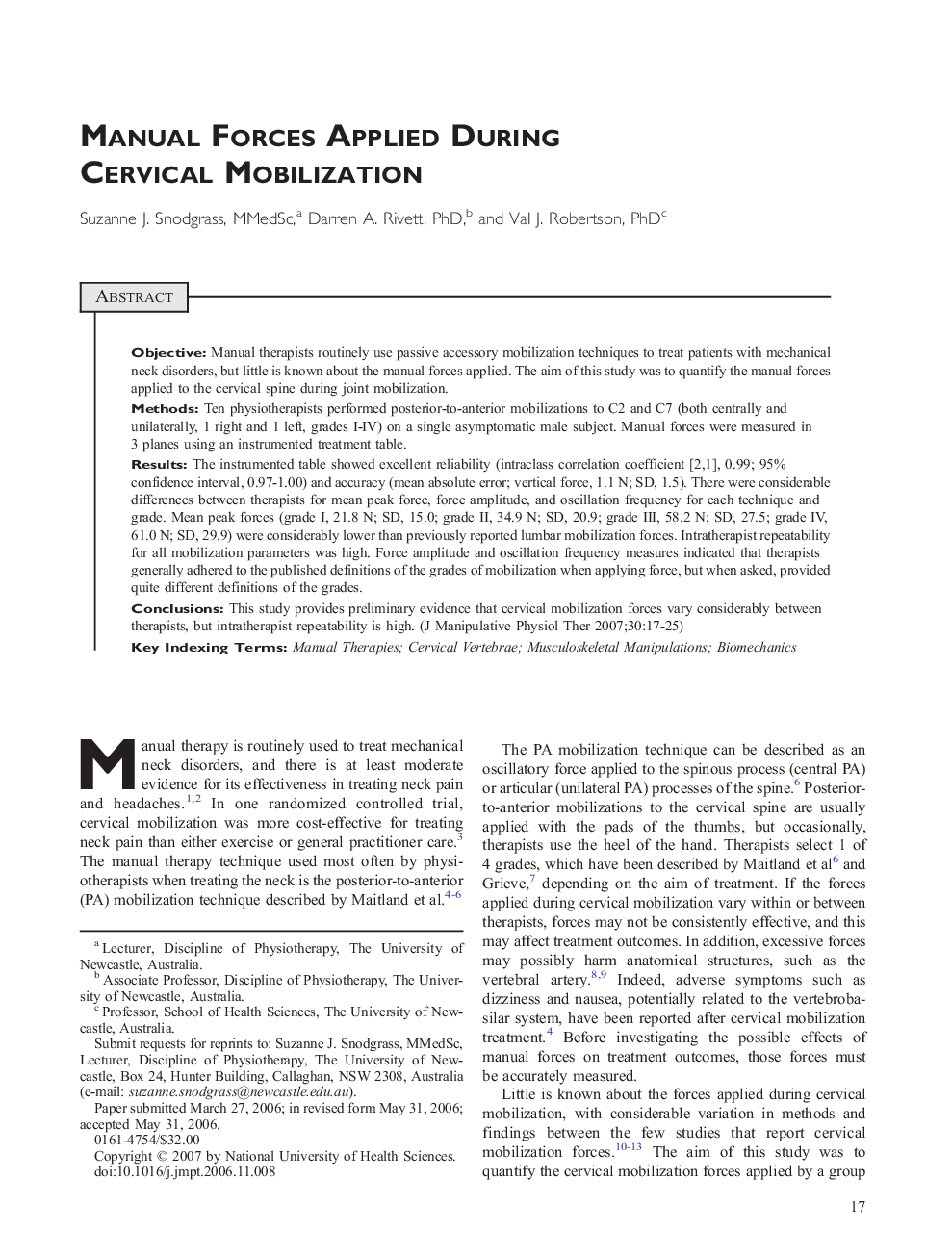| Article ID | Journal | Published Year | Pages | File Type |
|---|---|---|---|---|
| 2621530 | Journal of Manipulative and Physiological Therapeutics | 2007 | 9 Pages |
ObjectiveManual therapists routinely use passive accessory mobilization techniques to treat patients with mechanical neck disorders, but little is known about the manual forces applied.The aim of this study was to quantify the manual forces applied to the cervical spine during joint mobilization.MethodsTen physiotherapists performed posterior-to-anterior mobilizations to C2 and C7 (both centrally and unilaterally, 1 right and 1 left, grades I-IV) on a single asymptomatic male subject. Manual forces were measured in 3 planes using an instrumented treatment table.ResultsThe instrumented table showed excellent reliability (intraclass correlation coefficient [2,1], 0.99; 95% confidence interval, 0.97-1.00) and accuracy (mean absolute error; vertical force, 1.1 N; SD, 1.5). There were considerable differences between therapists for mean peak force, force amplitude, and oscillation frequency for each technique and grade. Mean peak forces (grade I, 21.8 N; SD, 15.0; grade II, 34.9 N; SD, 20.9; grade III, 58.2 N; SD, 27.5; grade IV, 61.0 N; SD, 29.9) were considerably lower than previously reported lumbar mobilization forces. Intratherapist repeatability for all mobilization parameters was high. Force amplitude and oscillation frequency measures indicated that therapists generally adhered to the published definitions of the grades of mobilization when applying force, but when asked, provided quite different definitions of the grades.ConclusionsThis study provides preliminary evidence that cervical mobilization forces vary considerably between therapists, but intratherapist repeatability is high.
